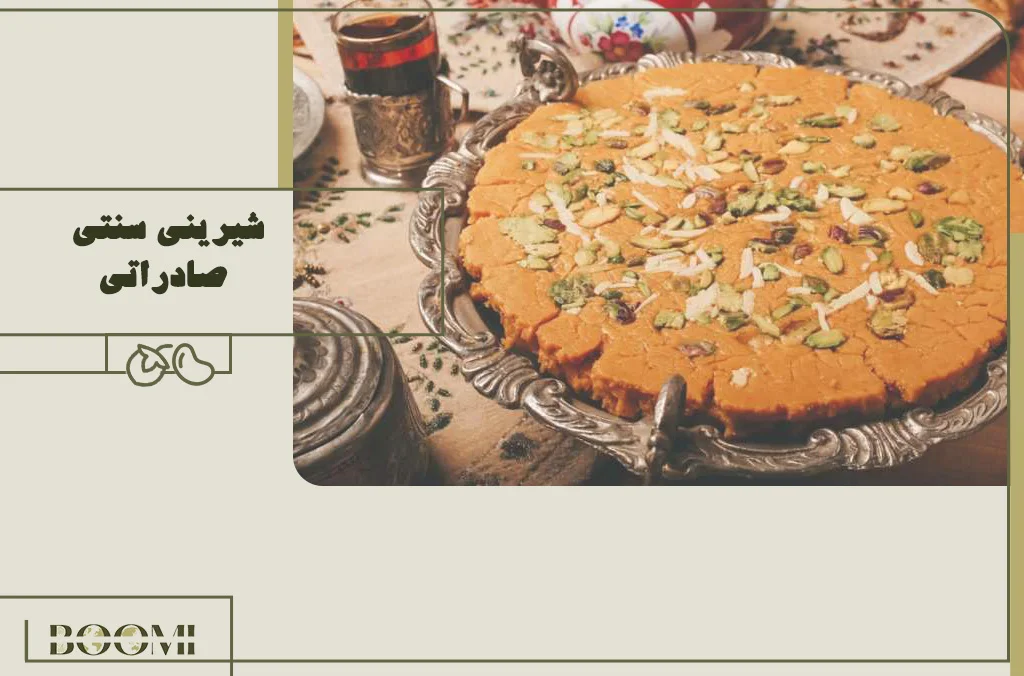In recent years, significant efforts have been made to introduce and export these traditional sweets to foreign markets. As a result, Iranian producers and entrepreneurs are now manufacturing traditional sweets more professionally by adhering to international standards and utilizing modern techniques.
Iranian traditional export sweets are one of the cultural and culinary treasures that introduce unique flavors and aromas to the world. These products, in addition to their delightful taste, are a symbol of Iran’s rich traditions and cultural heritage. The high variety of traditional Iranian sweets is due to the use of locally sourced ingredients and their handmade nature. These products have not only gained popularity in the domestic market but also have many admirers in the global market.
In the following sections of this article, we will explore various types of traditional export sweets. In addition to sweets, healthy and nutritious snacks have also gained significant attention in today’s market. One such snack is fruit chips, which hold a special place in the snack basket. If you are looking for a complete guide, you can refer to the Complete Guide to Fruit Chips Export.
Types of Traditional Export Sweets
In this section of the article, we will explore various types of traditional export sweets, including Gaz, Bershtook, Sohan, and Saffron Sweets.
Saffron Sweet
Saffron sweets are one of the most popular traditional sweets of Iran, made with saffron, flour, and sugar. Known for their unique flavor and aroma, these sweets are commonly served during special occasions and gatherings. Given the increasing demand for Iranian products in the global market, saffron sweets are considered a high-quality export option. Selecting suitable and competitive packaging can significantly enhance the chances of success for these sweets in international markets.
Gaz
Gaz is one of the traditional and well-known Iranian sweets, especially produced in the province of Isfahan. This sweet is made with various nuts, egg whites, and sugar, and has a soft texture. By adhering to international standards and using attractive packaging, Gaz can be effectively introduced to foreign markets.
Bershtook
Bershtook is one of the traditional and delicious Iranian sweets made with flour, sugar, and nuts. This sweet has a crispy and toasted texture, making it a popular snack. Bershtook is typically served at gatherings and special occasions, and due to its delightful taste, it has many fans. In recent years, the production and export of Bershtook to various parts of the world have increased. To succeed in international markets, it is essential to maintain product quality, adhere to production standards, and use elegant and attractive packaging.
Sohan
Sohan is one of the most delicious and popular traditional Iranian sweets, especially produced in the city of Qom. This sweet is made from a combination of flour, sugar, saffron, and nuts such as almonds or pistachios, offering a crispy texture and a sweet flavor. The export of Sohan to various countries is expanding due to the increasing demand for traditional Iranian products.
Advantages of Exporting Traditional Sweets
The export of traditional Iranian sweets, as an important sector of the country’s economy, offers numerous advantages. The first benefit is generating income and creating job opportunities in the confectionery industry, which helps develop small and medium-sized businesses. Exporting these products not only increases national revenue but also helps strengthen the country’s brand in global markets by introducing the rich flavors and culture of Iran.
Another product in Iran’s food industry is natural honey, which is globally recognized for its medicinal properties and unique taste. Alongside traditional sweets like Gaz, Sohan, and Bershtook, honey, as a natural and organic product, can be an excellent complement for export. These two groups of products, with their high quality, can attract more attention in international markets. For more information about honey exports and their benefits, you can refer to the article on Honey Export.
Moreover, exporting Iranian sweets can diversify the country’s export portfolio and reduce dependency on oil and other raw materials.
Conclusion
In conclusion, Iran’s traditional export sweets are a reflection of the country’s rich culture and diverse cuisine. By producing high-quality sweets with unique flavors such as saffron sweets, Gaz, Bershtook, and Sohan, these products have secured a special place in global markets. Focusing on innovation in production, suitable packaging, and adherence to international standards are the keys to success in the field of exports.
Moreover, introducing these sweets as representatives of Iranian culinary art not only generates income and creates jobs but also provides an opportunity to promote Iran’s rich culture on a global scale.

